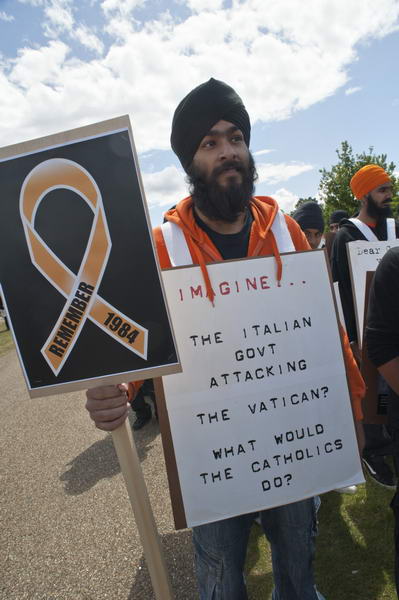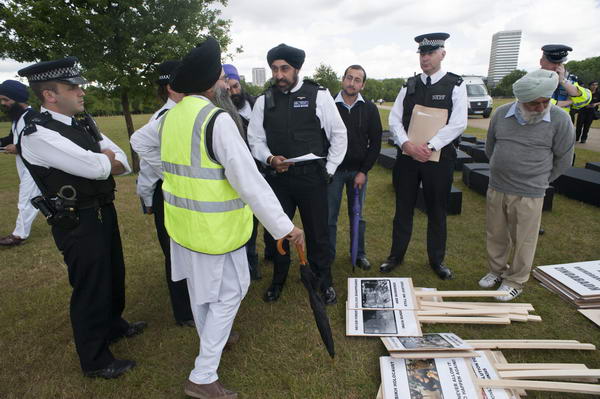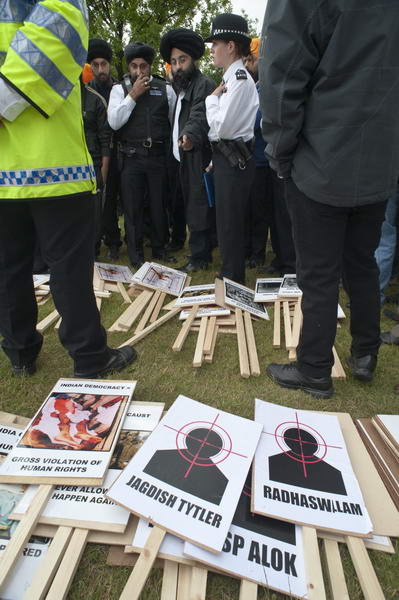On Sunday Sikhs marched through London on the 25th anniversary of the storming by the Indian Army of their holiest site, the Golden Temple at Amritsar. Indira Ghandi had ordered the assault to capture or kill Sikh separatists who were in the compound at a time of year when it was also full of pilgrims.
It’s hard to be sure how many people were killed by the attack, but independent estimates suggest around 5,000, including many women and children, as well as hundreds of Indian soldiers and a relatively small number of Sikh militants.
A few months later, Mrs Ghandi’s Sikh bodyguards killed her. Following the assassination, high-ranking Indian politicians from her Congress Party incited mobs to indiscrimately attack and murder Sikhs, and thousands were massacred. Sikhs continue to fight for a nation of their own, Khalistan, through groups such as Babbar Khalsa International, and repression against them has also continued; Sikhs allege that “over 250,000 Sikhs have been killed by in an orchestrated genocide by the Indian government.”

You can see more about the march and rally before the march on My London Diary, where there are many more pictures.
One aspect that worried me was an attempt by the police to censor the placards before the start of the march. The officer in charge, Superintendent Raj Kohli, the Met’s highest-ranking Sikh officer, objected to a number of them because of the images on them, and a woman officer said that some might cause offence, particularly because they might be seen by children.

I didn’t think that the arguments the police put forward were in fact valid. Children would be unlikely to be able to interpret the images in any detail when they were being carried on placards in a demonstration, and I think they would have rather less impact on children than on adults. The placard that Kohli was most insistent about was different, showing a simple graphic of a person’s head seen in a gun sight, and the name of a prominent Indian politician who was implicated in the massacres of Sikhs. He saw this a clearly a provocation to violence, while I would see it more as an expression of what should the persons concerned deserve.

Although some agreement seemed to have been reached between Kohli and the protesters, many if not all of the disputed placards were carried in the march and can be seen in the pictures on My London Diary.
Kohli was carrying an A4 printout of the symbol of Babbar Khalsa International, a proscribed organisation under the Terrorism Act, 2000. This was present, along with the name Babbar, on many of the placards and banners that people carried in the march. So far as I saw the police took no action over this, perhaps because it would have involved dealing with thousands among those marching.
BKI and attempt to establish Khalistan certainly appears to have the support of a large fraction of British Sikhs, and more obviously so than when I started photographing Sikh events, perhaps around ten years ago. It’s only aim appears to be self-determination for the Sikh nation and I can see little reason why our government should feel a need to include it on the list of banned organisations. Though of course I wouldn’t want to express any approval or support for it, as that would almost certainly be an offence.